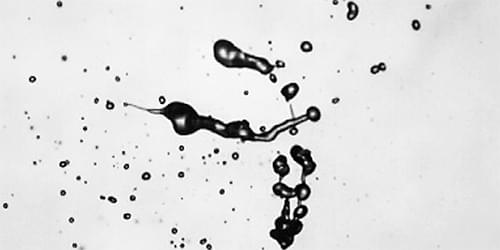A new model of liquid sprays reveals the mechanisms behind droplet formation—providing important information for eventually controlling the droplet sizes in, for example, home cleaning sprays.
Spraying a cleaning product on a kitchen counter may be a mundane task, but it embodies a wide-reaching environmental problem. In atomized sprays like these, the largest droplets land on the surface as desired, while the smallest ones drift away and evaporate, wasting liquid and contaminating the surroundings. As Isaac Jackiw of the University of Alberta, Canada, says, “If you have an intuitive understanding of where the different sizes come from, then you can start to imagine specific targeted approaches for preventing unwanted sizes.” He and his colleagues have now developed a physics-based model that predicts the distribution of droplet size in sprays emitted from a nozzle. Jackiw presented the work at the Canadian Chemical Engineering Conference in Toronto this month.
In classical models of aerodynamic droplet breakup, airflow hits a liquid and causes it to explode into droplets. To explain the average droplet size, theorists have often focused on a single, dominant mechanism. But these methods have not been able to directly predict the distribution in droplet sizes, Jackiw says. His approach can estimate the size distribution by incorporating several different mechanisms, each of which contributes droplets in a particular size range.
